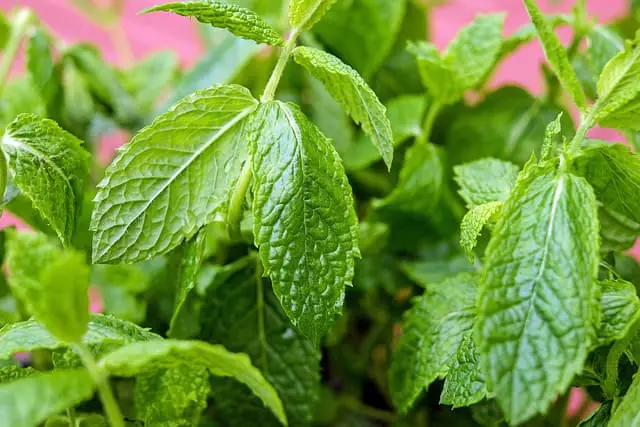Mint is a popular herb that is commonly used in cooking and as a natural remedy for various ailments. However, many people struggle to keep their mint plants alive. If you’re one of them, you might be wondering why your mint plant keep dying.
Understanding the requirements of mint plants is crucial to keeping them healthy. Mint plants need well-draining soil, plenty of sunlight, and consistent moisture. If any of these requirements are not met, your mint plant may start to wilt, turn yellow, or even die.
There are several common reasons why mint plants die. Overwatering, underwatering, poor soil conditions, lack of sunlight, and pest infestations are some of the most common culprits.
Choosing the right pot and ensuring proper drainage can also impact the health of your mint plant. In this article, we will explore these issues and provide tips on how to care for your mint plant to keep it healthy and thriving.
Key Takeaways
- Understanding the requirements of mint plants is essential to keeping them healthy.
- Common reasons for mint plant death include overwatering, underwatering, poor soil conditions, lack of sunlight, and pest infestations.
- Choosing the right pot and ensuring proper drainage can also impact the health of your mint plant.
Learn more about plant care from these other posts:
- Why Does My Jade Plant Have Black Spots?
- Why Does My Basil Plant Keep Dying?
- Why Does My Aloe Plant Smell Like Onions?
Understanding Mint Plant Requirements
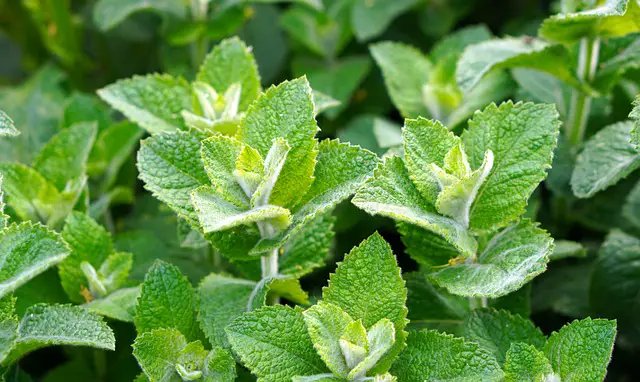
Mint plants are relatively easy to grow, but they do have specific requirements that need to be met to thrive. Here are some key factors to consider when growing mint:
1. Sunlight Needs
Mint plants require plenty of sunlight to grow well, but they can also tolerate partial shade. In subtropical areas or in climates where humidity is frequent, partial shade is best.
Aim for at least six hours of sunlight every day. If you notice that your mint plant is not getting enough sunlight, move it to a sunnier location or consider using a grow light.
2. Watering Requirements
Mint plants require consistently moist soil, so make sure to water them regularly. However, be careful not to overwater them, as this can lead to root rot. A good rule of thumb is to water the plant when the top inch of soil feels dry to the touch.
If you’re growing mint in a pot, make sure it has adequate drainage to prevent water from accumulating at the bottom.
3. Soil and Nutrient Preferences
Mint plants prefer slightly acidic soil with a pH ranging from 6.5 to 7.0. They also require rich soil that is well-draining and has plenty of organic matter.
Consider adding compost or aged manure to the soil before planting to provide nutrients. You can also fertilize the plant with a balanced fertilizer every two to three weeks during the growing season.
4. Temperature Tolerance
Mint plants are tolerant of a wide range of temperatures, but they prefer cooler temperatures between 60 and 70°F. They can also tolerate temperatures up to 90°F, but if the temperature rises above this, the plant may begin to wilt. If you’re growing mint indoors, make sure to keep it away from heating vents or other sources of heat.
Why Your Mint Plant Keep Dying – 6 Common Problems
Mint is a hardy herb that is easy to grow, but it can still die for various reasons. In this section, we will discuss the most common reasons for mint plant death and how to prevent them.
1. Overwatering and Root Rot
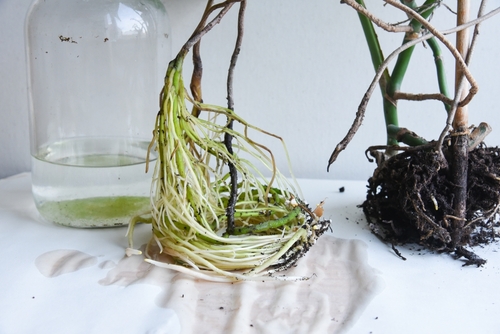
Overwatering is the most common cause of mint plant death. When the soil is constantly wet, it creates the perfect conditions for root rot and fungal diseases. Root rot is a condition that occurs when the roots of the plant are damaged by waterlogged soil, which can eventually kill the plant.
To prevent overwatering, make sure that the soil is well-drained and that the pot has sufficient drainage holes. Allow the soil to dry out slightly between waterings.
2. Nutrient Deficiencies
Mint plants require certain nutrients to grow properly, and a lack of these nutrients can cause the plant to die. Nitrogen, phosphorus, and potassium are the three main nutrients that plants need to survive.
If the soil is lacking in any of these nutrients, it can cause stunted growth, yellowing leaves, and eventually plant death. To prevent nutrient deficiencies, use a well-balanced fertilizer that contains all three of these nutrients.
3. Pest Infestations
Pests can also cause mint plant death. Common pests that affect mint plants include spider mites, aphids, and whiteflies. These pests suck the sap from the leaves, causing them to wilt and die. To prevent pest infestations, keep the plant healthy and well-watered, and use insecticidal soap or neem oil to control the pests.
4. Fungal Diseases
Fungal diseases can also cause mint plant death. Rust and anthracnose are two common fungal diseases that affect mint plants. Rust causes orange or yellow spots on the leaves, while anthracnose causes brown or black spots on the leaves.
To prevent fungal diseases, make sure that the soil is well-drained and that the plant is not overcrowded. Use a fungicide to control the disease if it does occur.
5. Poor Soil Condition
Poor soil condition can also cause mint plant death. Mint plants prefer a slightly acidic soil with a pH between 6.0 and 7.0. If the soil is too alkaline or too acidic, it can cause the plant to die. To prevent poor soil condition, test the soil pH and adjust it if necessary. Use a well-draining soil that is rich in organic matter.
6. Incorrect Lighting Conditions
Mint plants require plenty of sunlight to grow properly. If the plant is not getting enough sunlight, it can become weak and susceptible to disease. On the other hand, if the plant is getting too much sunlight, it can become scorched and die.
To prevent incorrect lighting conditions, make sure that the plant is getting at least six hours of sunlight per day. If the plant is indoors, place it near a sunny window.
Choosing the Right Pot and Drainage
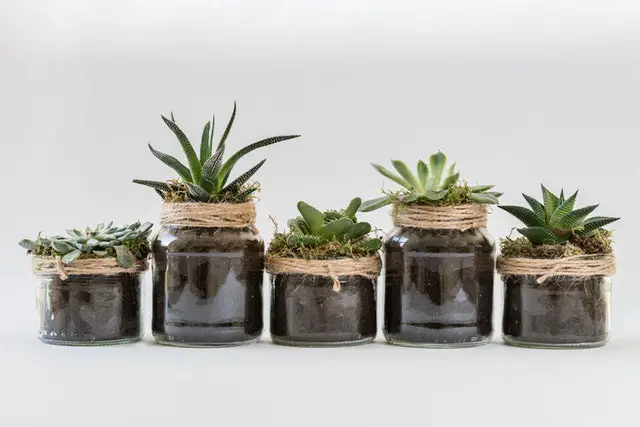
When it comes to growing mint, choosing the right pot and ensuring proper drainage are two crucial factors that can make or break the plant’s health. Here are some tips to help you get it right.
Pot Selection
Selecting the right pot size is essential for the growth and health of your mint plant. Mint plants have shallow roots, so a wide and shallow pot is ideal. A pot that is too small can restrict the plant’s growth, while a pot that is too large can lead to overwatering and root rot.
The ideal pot size for mint is around 12 inches in diameter and 8 inches deep. It is also important to choose a pot made of a porous material like terracotta or clay that allows for air and water circulation. Plastic pots are not recommended as they can retain moisture and lead to overwatering.
Ensuring Proper Drainage
Proper drainage is crucial for the health of your mint plant. Without proper drainage, excess water can accumulate in the soil, leading to root rot and other fungal diseases. To ensure proper drainage, make sure your pot has drainage holes at the bottom.
If your pot does not have drainage holes, you can drill them yourself. Covering the bottom of the pot with a layer of rocks or gravel can also help improve drainage. However, it is important to note that this should not be used as a substitute for drainage holes.
When watering your mint plant, make sure to water thoroughly and allow excess water to drain out of the pot. Do not let your plant sit in standing water, as this can lead to root rot.
Mint Plant Care Tips
Taking care of a mint plant can be challenging, but with proper care, it can thrive. Here are some tips to help you care for your mint plant:
1. Fertilizing and Composting
Mint plants require regular fertilization to grow well. Nitrogen-rich fertilizers are ideal for mint plants. You can use organic fertilizers like compost, which is a great source of nitrogen and other essential nutrients. Composting also helps in improving the soil quality.
2. Mulching and Soil Management
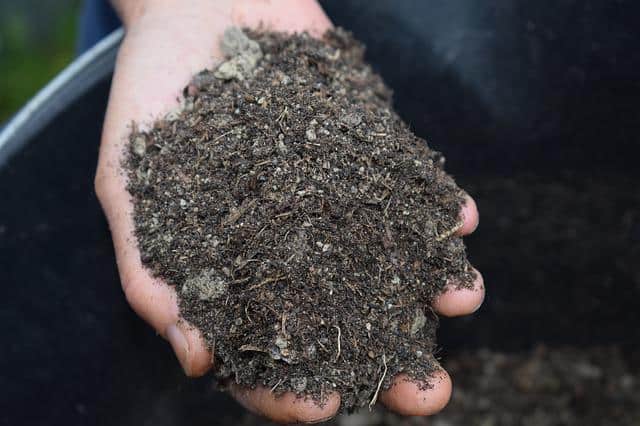
Mulching helps in retaining moisture in the soil and also helps in preventing weed growth. You can use organic matter like sand, peat moss, or coir as mulch. It is also important to manage the soil properly.
Mint plants require moist soil, but it should not be too wet. Proper drainage is necessary to prevent root rot. Use well-draining soil, and avoid overwatering.
3. Balancing Sunlight Exposure
Mint plants require sunlight to grow, but direct sunlight can be harmful. Mint plants grow best in partial shade. If you are growing mint indoors, place it near a window that receives indirect sunlight. If you are growing it outdoors, choose a spot that receives partial shade.
It is also important to balance the moisture levels in the soil. Too much or too little moisture can cause the plant to die. Use a liquid fertilizer to provide the plant with the necessary nutrients. With proper care, your mint plant can thrive and provide you with fresh mint leaves for years to come.
Identifying and Treating Mint Diseases
Recognizing Mint Diseases
Mint plants are susceptible to various diseases caused by fungal pathogens, pests, and environmental factors. Some common diseases that affect mint plants include mint rust, verticillium wilt, and mosaic virus infections.
- Mint Rust: This fungal disease is characterized by orange or yellow pustules on the undersides of the leaves. The infected leaves may turn yellow and fall off, leading to stunted growth and reduced yield.
- Verticillium Wilt: This soil-borne fungal disease causes the leaves to wilt and turn yellow or brown. The disease can cause root rot, leading to the death of the plant.
- Mosaic Virus Infections: This viral disease causes mottling or yellowing of the leaves, stunted growth, and reduced yield.
Other pests that may attack mint plants include loopers, aphids, flea beetles, mealybugs, and cutworms. These pests can cause damage to the leaves, leading to reduced yield and stunted growth.Effective Treatment Methods
Effective treatment of mint diseases involves early detection and prompt action. Here are some effective treatment methods for common mint diseases:
- Fungal Diseases: Fungal diseases can be controlled by removing and destroying infected plant parts and improving air circulation around the plants. Application of fungicides can also help control the spread of the disease.
- Pest Infestation: Pests can be controlled by removing and destroying infected plant parts and using insecticides or natural predators to control the pests.
- Frostbite and Cold Injuries: Frostbite and cold injuries can be prevented by covering the plants with a frost blanket or moving the plants to a warmer location.
- Heat Stress: Heat stress can be prevented by providing shade, mulching the soil, and watering the plants regularly.
- Brown Leaves: Brown leaves can be caused by various factors, including overwatering, underwatering, nutrient deficiency, and pest infestation. Identifying the underlying cause and taking appropriate action can help prevent further damage.
Conclusion
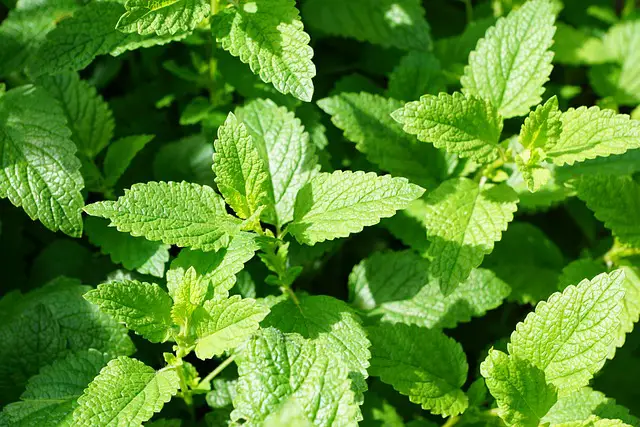
There are several reasons why a mint plant may die. It could be due to poor soil conditions, lack of water, excessive sunlight, poor air circulation, and poor sanitation. In addition, it could also be the result of nutrition deficiency, heat exhaustion, inadequate growing space, and frostbite injuries.
Over-watering is the most common cause of mint dying, creating the perfect conditions for root rot and disease. On the other hand, under-watering can lead to yellow leaves, soft sickly leaves, weak stems, and dropped leaves.
Pest infestations such as spider mites can also trigger various problems for mint, which can be fatal eventually. Gardeners should be careful when using fertilizers, as excess fertilizers can burn the roots and lead to soggy soil.
It is important to pay attention to the moisture level of the soil and ensure that the mint plant is receiving enough oxygen. Sandy soil with poor water retention can also lead to the death of the plant.
Frequently Asked Questions
How can I prevent my mint plant from dying?
To prevent mint plants from dying, it is important to provide them with the right growing conditions. Mint plants prefer rich, slightly acidic soil with a pH ranging from 6.5 to 7.0. They also require good drainage, so make sure the soil is not too compacted.
Additionally, mint plants need plenty of sunlight, so make sure they are placed in an area that receives at least 6 hours of sunlight per day.
What are some common causes of mint plant death?
Mint plants can die for a variety of reasons, including overwatering, underwatering, lack of nutrients, frostbite, heat stress, pests, and diseases. It is important to identify the specific cause of your mint plant’s death so that you can take the appropriate steps to address the issue.
How often should I water my mint plant?
Mint plants require regular watering, but it is important not to overwater them. The frequency of watering will depend on factors such as the size of the plant, the type of soil, and the temperature and humidity of the environment.
As a general rule, you should water your mint plant when the top inch of soil feels dry to the touch.
What are some signs that my mint plant is overwatered?
Overwatering can cause mint plants to become waterlogged and develop root rot. Signs of overwatering include yellowing leaves, weak stems, and a foul odor emanating from the soil. If you suspect that your mint plant is overwatered, allow the soil to dry out before watering again.
What can I do to revive a dying mint plant?
To revive a dying mint plant, you should first identify the cause of its decline. If the plant is underwatered, give it a good soak and make sure to water it regularly going forward. If the plant is overwatered, allow the soil to dry out before watering again.
If the plant is suffering from a lack of nutrients, consider fertilizing it with a balanced fertilizer. If the plant is affected by pests or diseases, take appropriate measures to control the infestation.
Are there any specific pests or diseases that commonly affect mint plants?
Mint plants can be affected by a variety of pests and diseases, including spider mites, aphids, root rot, and powdery mildew. It is important to identify the specific pest or disease affecting your mint plant so that you can take the appropriate measures to control the infestation.

Hey, I’m Lisa and I’ve been an avid gardener for over 30 years. I love writing, talking and living in the garden! Feel free to connect with me on my socials below

